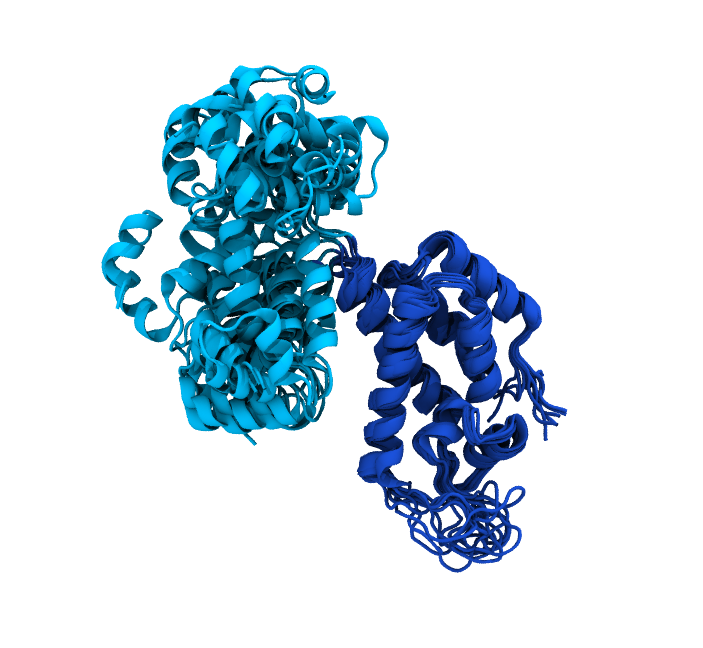Biophysics
Overview
Biophysics involves applying the theory of physics to study biological phenomena. This includes investigations into molecules, cells and proteins, allowing students to carry out projects with explicit relevance to real life.
 Fig.1 Molecular Dynamics simulation of a protein forming the HIV-1 viral capsid
Fig.1 Molecular Dynamics simulation of a protein forming the HIV-1 viral capsid Biophysics projects often involve investigating the properties of materials, through both experiment and computation. Projects tend to be part of a larger research area, and students work as part of a research group. Experimental work involves working in our biophysics labs, using advanced equipment to analyse biological material. Alternatively, computational work can involve machine learning and molecular simulations to model more complex systems such as proteins, often using the supercomputer available to the department.
As biophysics is an interdisciplinary area, projects are often shared with the biology department, allowing students to branch out from pure physics.
Projects:
Projects are updated regularly, but previous project topics have included:
- Can a neural network learn molecular dynamics?
- Develop and test a neural network trained with collections of protein conformations produced by molecular simulations.
- Mechanical insights into the boundaries of life
- Membrane mechanics is the focus of active biophysical investigations. This project will study how the fluidity of the lipid membrane determines the membrane response to mechanical stretch and pressure deformation.
- Exploring a new generation of antimicrobial peptoids
- In this project, various biophysical techniques including circular dichroism and UV spectroscopy will be used to assess the 3D structure and folding of antimicrobial peptoids to understand how they can interact with microbial membranes.


/prod01/prodbucket01/media/durham-university/departments-/physics/teaching-labs/VT2A9034-1998X733.jpeg)